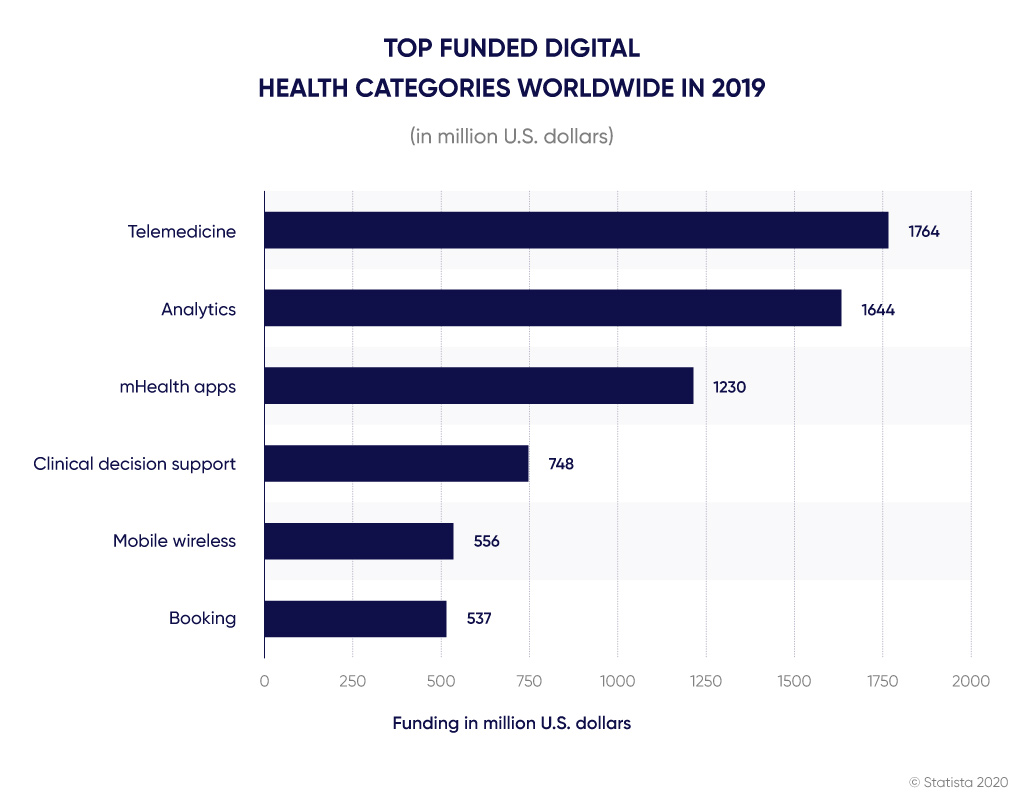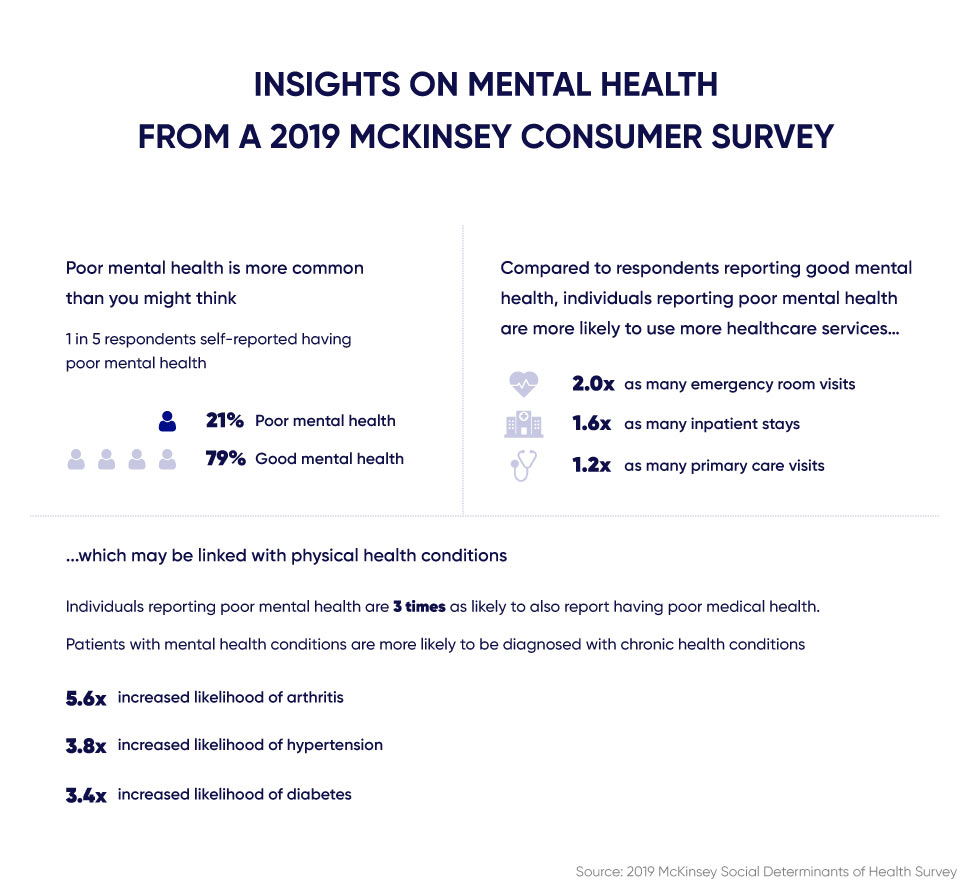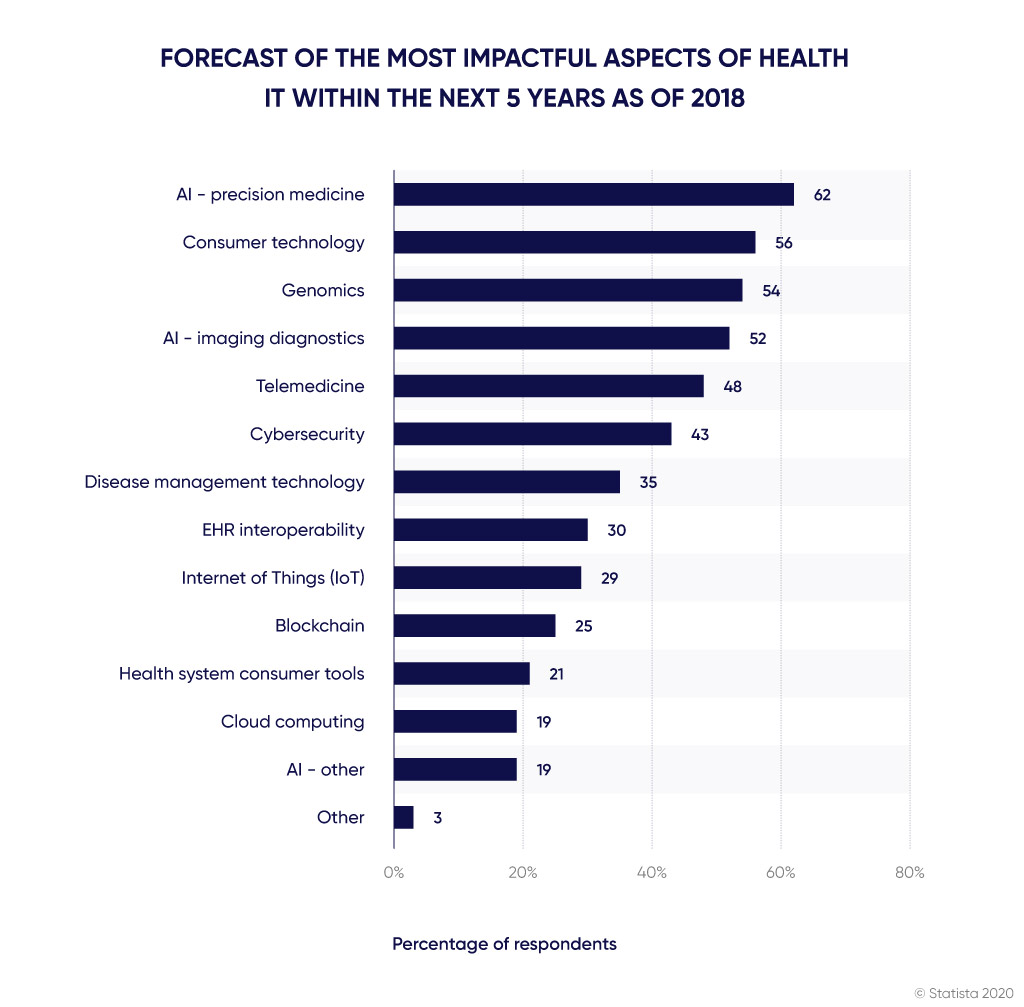To describe the extensive process of integrating modern technologies into different areas of everyday life, mass-media coined a new term, “digital transformation.” You have probably noticed it in various articles, and it will remain a trendy phrase at least for a while. As an example, let us examine what digital transformation means for such a fundamental and extensive field as modern healthcare.
What is Digital Transformation in Healthcare?
In relation to healthcare, digital transformation covers numerous processes designed to upgrade the whole ecosystem of the medical industry, companies, and services. It is far more extensive than just using computers everywhere and substituting people with robots where possible. This strategy implies multiple changes in different aspects, approaches, and operations of the healthcare industry; that’s why it is named “transformation.”
There are two main reasons why the field of health care desperately needs digital innovations and corresponding changes. First of all, in developed countries, the median age of population is already 37+ and increasing. So, in a few decades or even years, these countries will have a sizeable share of older adults who often require medical attention.
Second of all, the recent decade has shown a persistent trend of recurrent pandemics. Even a regular flu season is a significant load for clinics, hospitals, and pharmacies. Any “unscheduled” disease outbreak adds extra strain to healthcare service providers. Digital transformation aims to increase the effectiveness, remove bottlenecks, and speed up all the necessary steps to provide high-quality help and cure a patient. This way, it increases the capacity of the healthcare system and reduces the workload of doctors and nurses.
Since the goal of digital transformation is to make the health system more effective as a whole, healthcare providers are financially interested in its successful realization. They invest in adopting new technologies and approaches and include the respective costs in their business models. DT also presents an excellent opportunity for any innovators to provide unique and effective medical solutions for doctors and patients.
Trends and Examples
Digital transformation is a relatively new strategy in modern healthcare. However, even in the current stage, it has numerous highly prospective directions of development. Let us take a look at some of the most promising trends of DT in the contexts of medical services.

Digitalization of data
Perhaps, one of the core strategies associated with the digital transformation is the conversion of stored information into the digital form and applying this new format for all data-related processes. In relation to healthcare, this means the use of electronic medical records instead of patient charts filled by hand and building various types of databases.
These extensive and secure databases will contain personal health records, info on staff and capacity of every hospital, results of medical research and clinical trials, and much more. The conversion of information into the digital form is the essential prerequisite for using it effectively with state-of-the-art and future technologies.
Data mining and Big Data solutions
The digital format of information allows the extensive application of Big Data and data mining. These technologies are crucial for making the healthcare system more effective and better suited for current and future needs on local, national, and worldwide levels. This step of digital transformation requires a further overhaul of the infrastructure, culture, and operating methods of healthcare organizations.
It is not enough to change archives that store paper media into server rooms and computer networks. Digital transformation also requires qualified specialists with appropriate computer skills to create, maintain, and effectively use different forms of electronic databases, management systems, and other software solutions.
There are numerous possible implementations of Big Data technologies in healthcare. For example, they have a considerable potential for analytics, scientific research, and disease prediction. These activities have become much more productive with the use of cloud computing for heavy calculations. As another example, nowadays, handling large volumes of medical data is often associated with hospital management systems.
The Internet of Things
Digital transformation also changes the way of obtaining health-related data from people. Smart devices can collect and share different types of personal information on a daily basis. Such data, in addition to other implementations, may have multiple uses in the context of healthcare.
For example, modern fitness trackers can monitor heart rate, temperature, sleep cycle, even blood oxygen saturation or stress level. In combination with properly designed software, such information can be used for various purposes beneficial to the user. This data can be automatically added to digital health records, used to diagnose an illness, or prevent the recurrence of a chronic disease. The results of constant monitoring may be used to develop and alter a physical exercise routine or a healthy diet, for example, in case of such widespread conditions like obesity and diabetes.
However, the IoT really shines when it is implemented in telemedicine solutions. Nowadays, most people have smartphones and constant access to the Internet; that’s why mobile applications for various healthcare needs are gaining popularity. Thanks to modern telecommunication technologies, users finally got a fast and effective way to book an appointment in advance or even have a doctor’s consult without attending a clinic. This way, the distance and long waiting lines are no longer a problem.
AI and ML
Artificial intelligence and machine learning have almost limitless potential in many fields, including healthcare. They are often regarded as the most impactful technologies that shape the near and distant future of mankind. Even a brief overview of possible implementations of AI and ML in healthcare will be large enough to require a dedicated article. One illustrative use of artificial intelligence for the urgent need of healthcare is described below.
Recently, AI solutions are employed more and more often for stress management and as a therapy for several mental disorders. While the attempts of using artificial intelligence to manage stress have been known for several years, the easy-to-use embodiments became available only recently. The combination of AI and mobile software development brought us such type of programs as mental health chatbots.
According to McKinsey Consumer Survey, 21% of responders admit they have poor mental health. However, this result was obtained in 2019, before the COVID-19 pandemic and the subsequent quarantine that undoubtedly took its toll on people. That’s why there will be an increasing need for AI solutions that are easily available on smartphones and can relieve depression, anxiety, and other mental conditions. An excellent example of such a solution is Wysa – a chatbot to handle depression, anxiety, and stress.
Moreover, problems with mental health are often the sign or the cause of poor physical health. With the help of artificial intelligence, users may communicate with specially designed and “educated” chatbots and receive similar patient experience and positive results as from visiting a psychotherapist.
However, unlike many human therapists, software enhanced with AI and ML may be able to find subtle signs of related physical illnesses. A medical chatbot may perform this automatically by analyzing the communication with a particular patient and comparing the detected symptoms with the established reference database. So, in this case, digital transformation involves the partial substitution of human doctors with artificial intelligence combined with machine learning and Big Data technologies.

AR/VR
As another beneficial direction of digital transformation, the healthcare industry started to adopt hardware and software solutions that implement virtual/augmented reality. Briefly speaking, virtual reality changes the conventional approaches to numerous areas of healthcare and related industries. It brings new possibilities for medical training, surgeries, treating various mental and physical disorders, etc.
The adoption of VR and AR in the healthcare industry illustrates how digital transformation brings new methods of learning new skills and applying them in practice. There are several available projects that employ this concept, such as OssoVR – a virtual reality platform for surgical training. Nowadays, old and new technologies are used in education side-by-side, and medical students gain knowledge both from books and from immersive virtual presentations.
Virtual reality has also proven its importance in several therapeutic approaches that are more promising than existing procedures and drugs. These and other uses and advantages of virtual reality in the medical field are described in more detail in the dedicated article in our blog.
Robotics and bionics
One of the most unbelievable directions of digital transformation in healthcare is the combination of engineering and software development to restore or enhance the functionality of human bodies.
This area is very extensive and shows a lot of potential to completely reshape the lives of future people. In one aspect, this field includes various implants: from simple RFID chips to high-tech pacemakers and experimental bionic eyes. Another related aspect includes complex robotic prostheses and exoskeletons. All these solutions require reliable algorithms, sensors, processors, and other means to create a functional interface between the human nervous system and the robotic body part. Among several existing examples, the Argus II retinal prosthesis system is perhaps one of the most impressive as of today.
This example shows the perspectives of improving the quality of life for many patients thanks to the digital transformation in medicine and other sciences. With the further evolution of technologies and the adoption of innovations, people would be able to slow down the aging process and have a full life for much longer than now.
Perhaps, the widespread adoption of robotic implants and similar technologies is the matter of the distant future. However, the first steps in this direction became possible also due to the digital transformation of different sciences and industries, including healthcare.
5 Main Benefits of Digital Transformation in Healthcare
In a nutshell, digital transformation, just like all innovations in all industries, aims to achieve two ultimate goals: improve effectiveness and increase customer satisfaction. However, these goals involve many specific advantages. Here are the top 5 benefits of digital transformation in healthcare.
- Reducing staff workload and costs of management. The digital format of information means less paperwork, faster access to data, and many further improvements. Various hospital management systems and telemedicine applications brought new opportunities for doctors, patients, and administration.
- More reliable and secure storage of information. New ways of keeping records result in less mistakes caused by a human factor, various mixups, loss of data, etc.
- More accurate diagnoses and outbreak predictions. The creation of specific medical databases and access to large computing capacities offer many possibilities for medical research and analysis. They can be used, for example, to diagnose cases with unusual symptoms or to forecast the global spread of an illness using machine learning models.
- Better visualization and accuracy of test results. Just compare an ordinary X-ray scan and a 3D image obtained with digital technologies. And now imagine examining a three-dimensional model using VR glasses. Needless to say, getting a bigger and better picture in medicine is highly important.
- Faster and more precise surgery. Digital technologies are incredibly useful in surgical procedures that demand careful planning and accurate execution. Thanks to DT, there are a lot of new ways to train surgeons and conduct operations. For example, nowadays, it is possible to plan a surgery based on ultra high definition digital images and perform it by a robot. This approach minimizes tissue damage and recovery time for a patient.
Ultimately, digital transformation reduces the time a patient has to spend in a clinic or hospital. Since these establishments rarely invoke pleasant customer experience, the satisfaction of patients increases if they get in and get out as fast as they can. Luckily, the same state of things is also beneficial for healthcare providers. Better technologies result in a faster patient turnover, so hospitals have a bigger capacity and bring more profits.

Conclusion
Digital transformation in healthcare is an incredibly extensive and complex strategy that involves numerous directions, aspects, and processes. To gain the most of it, governments should prioritize and carefully plan this strategy, control its realization, and provide adequate funding.
Potential benefits and profitability of digital transformation in healthcare and related areas attract many investors and startups. If you want to promote digital transformation and enter the healthcare market with innovations or improvements, contact us. We will develop an effective software solution for your ideas.



